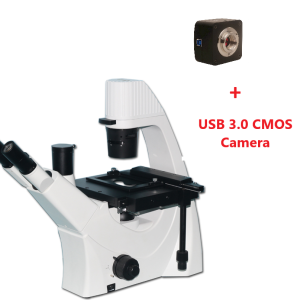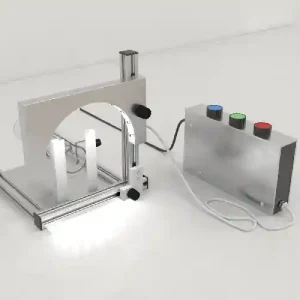$4,480.00 – $7,200.00Price range: $4,480.00 through $7,200.00
Manual microtome series offers reliable and precise sectioning solutions for various laboratory needs.
From the versatile RD-315 for routine tasks, to the RD-475 which provides enhanced precision for tissue applications, and finally the RD-495 designed for high-performance and advanced research, each model ensures consistent, high-quality tissue sections. These user-friendly, robust instruments are ideal for educational, clinical, and research environments requiring meticulous sample preparation without the complexity of motorized systems.
ConductScience offers the Semi-Auto Microtome Solutions

Conduct Science is a premier manufacturer of research infrastructure, born from a mission to standardize the laboratory ecosystem. We combine industrial-grade precision with a scientist-led tech-transfer model, ensuring that every instrument we build solves a real-world experimental challenge. We replace "home-brew" setups with validated tools ranging from microsurgical suites to pathology systems. With a track record of >1,600 institutional partners and hundreds of citations, our equipment is engineered to minimize human error. We help you secure more data for less of your budget, delivering the reliability required for high-impact publication.

bool(false)

bool(false)

Model | Standard Manual Microtome RF-RD-315 | Profesional Manual Microtome RF-RD-475 | Advanced Manual Microtome RF-RD-495 |
|---|---|---|---|
Section thickness setting range: | 0.5-60μm 0-2μm increment : 0.5μm 2-10μm increment : 1μm 10-20μm increment : 2μm 20-60μm increment : 5μm | 0-60µm | 0-2μm increment 0.5μm 2-20µm increment 1μm 20-60μm increment 5µm |
Trimming thickness setting range: | 0.5-60µm | 0-60µm Adjustable | 0-60um |
Minimum setting of sectioning thickness: | 1µm | 1µm | 1um |
Specimen retraction: | Specimen retraction and replaceable cassette holder system. | Specimen retraction and replaceable cassette holder system. | Specimen retraction and replaceable cassette holder system. 60um(optional) |
Precision and error: | ±1% | ±1% | ±1% |
Section base angle range: | 0°~15°Adjustable | 0°~15°Adjustable | |
Maximum specimen size: | 60mm * 50mm | 60mmx50mm | 70x70mm (optional clamp) |
Specimen horizontal feeding: | 0-28mm | 28mm±1mm | 28mm |
Specimen vertical feeding: | 52mm | 60mm | 70mm |
The sample rotated: | 360 degrees | 360 degrees | 360 degrees |
Specimen clamp rotation: | At any angle within 360° | ||
Specimen orientation system | 8° along the X-Y-axis, rotable 360° | XY-15° | XY-8° |
Net weight: | 28KG | 45KG | 37Kg |
Size: | 565mm*440mm*285mm(W*D*H) | 555mm*450mm*320mm(L*W*H) | 590mm*500mm*330mm(W*D*H) |
Specimen clamp: | universal clamp for embedding cassettes. | Paraffin block clamp or cassette clamp optional | Two options: paraffin block clamp and cassette clamp. |
Blade holder: | Blade holder base can be moved forward or backward and left or right | In high or in low profile blade holder, optional | Movement Range of the Base of Blade Holder Base: 0-23mm |
Specimen function: | Specimen retraction function (50 µm or custom-made) | Specimen Holder Rotation: at any angle within 360 degrees |
This model is a cost-effective and reliable workhorse for pathology labs, a staple for nearly two decades.
Economical Value: Offers a strong balance of price, quality, and easy maintenance. It’s an ideal starting point for pathologists new to ROUNDFIN products.
Robust & Clean Design: Features an easy-to-clean housing and a sturdy base for stable operation. Includes a wide, removable waste tray for simple cleanup.
Manual Handwheel with Safety Locks: The light-turning handwheel has an ergonomic handle to reduce fatigue. It includes two independent locking devices:
One lock (via the handle) secures the specimen head in the safest, uppermost position for blade or sample changes.
A second lever lock allows you to secure the handwheel at any position.
Accessible Coarse Feed: The coarse feed wheel is positioned low on the left side for comfortable, fatigue-free trimming.
High Precision & Stable Movement: Engineered for accurate and consistent sectioning.
Robust & Clean Design: Like the RD-315, it features an easy-to-clean housing and a stable base. It also comes with a wide, removable waste tray for convenient cleaning.
Enhanced Manual Handwheel: Features two independent locking systems: one to lock the handwheel at any 360-degree position, and another for quick locking at the top end.
Optimized Sample Movement: Offers fine-tuned control for sample advancement and retraction, including continuous movement from 0.1mm/s to 3.5mm/s, and single-point steps from 1µm to 60µm.
Personalized Small Handwheel: This “rough repair wheel” automatically disengages front and rear limits, preventing equipment damage if the sample moves beyond its set boundaries.
Superior Sectioning Precision: Utilizes imported cross-roller guide rails and a screw motion mechanism for extremely precise and stable sectioning.
Adjustable Specimen Angle: The cassette holder can be locked at any point along three axes, allowing for easy and precise adjustment of the sectioning angle.
Versatile Clamping: Allows for quick and easy switching between different specimen clamps, offering options for both paraffin blocks and cassettes.
Multiple Functions: Includes specimen retraction and trimming functions, along with a replaceable specimen holding system for flexibility.
Accurate Positioning: Features a precise positioning system that is user-friendly and provides accurate adjustments along both X- and Y-axes.


Manual rotary microtomes are essential tools in various scientific and medical fields, particularly in histology, pathology, and material science, where the preparation of thin, uniform tissue sections is critical for microscopic examination. Our manual microtomes offer reliable performance, ease of use, and robust construction, making them indispensable for both routine laboratory work and more specialized research applications. This series is designed to provide consistent, high-quality sections, enabling accurate diagnosis, detailed research, and effective material analysis.
The knife holder base holds the holder in place on the microtome stage. It can be moved to or away from the block, but it must remain fixed and secured during microtomy.
The knife holder comprises various parts, including the blade clamp, which holds the blade, the knife tilt, which adjusts the knife angle, and the faceplate, which directs the ribbons away from the blade and toward the operator.
The microtome body is a platform with rails that keeps the knife holder base in place.
The block holder or cassette clamp holds the paraffin block in place. The block usually slides up and down with each revolution while the blade remains stationary. The block holder may be equipped with knobs that enable the operator to move the block face in different directions to line the tissue with the blade.
The advancement handwheel rotates in one direction, moving the block closer to the knife at the preset microns.
The coarse handwheel moves the block closer or away from the knife.
Micron adjustment is used to adjust settings for slice thickness that vary from 1 to 60 microns.
The handwheel includes a safety lock that prevents the wheel from loosening and the block holder from falling towards the blade when inserting or removing a block.
The fundamental principle of all rotary microtomes, including our manual models, involves a precise mechanical action to achieve uniform tissue sections. A fixed tissue block, embedded in paraffin or resin, is mounted onto a specimen clamp. As the manual handwheel is rotated, a precisely engineered feeding mechanism advances the specimen block towards a stationary cutting blade. During each rotation, the specimen block moves past the blade, and a thin section of tissue is cleanly sliced off. The thickness of this section is determined by a highly accurate micrometer-based feed mechanism, which can be adjusted to increments as small as 1 micrometer. This continuous, controlled movement ensures that each section is of consistent thickness, critical for reproducible results in microscopy. Features like specimen retraction in models like the RD-315, RD-475, and RD-495 prevent the specimen from rubbing against the blade on the return stroke, extending blade life and improving section quality
The Rotary microtome is used to cut biological specimens according to the desired thickness ranging from 1 to 60 microns. It may be adapted to various types of tissue sectioning (hard, brittle, or fatty). However, it is not suitable for large tissue sectioning. Technological advancements in the rotary microtome have enhanced section quality, boosted production, and improved the technologist’s occupational safety.
The incidence of repetitive motion disorders, a frequent occupational health concern in the histology laboratory, may be reduced by eliminating the manual hand-wheel operation of the microtome. Disposable blades are used, eliminating the need for sharpening and increasing sample size accuracy. Additionally, knives can be used in place of blades; they are thick and large and produce fewer vibrations during microtomy. A high-resolution motor makes a stable and smooth automatic slicing system. Its heavier size makes it stable, and it is crucial to avoid undulations in the paraffin sections. A double locking system makes it secure and prevents injuries during block handling. An emergency button is used to stop the operation in danger. It is anti-static, non-waxing, and is very easy to clean. It has four different automatic slicing modes that cover a lot of sampling situations. Daily cleaning from paraffin residue maintains a microtome cutting ideally for many years.
The heavy size of the rotary microtome makes it less portable. The disposable blades are expensive and need to be handled with care to avoid accidents. Moreover, the knives get dull if they aren’t used on decalcified tissue that hasn’t been cleaned.
| Weight | 6.61 lbs |
|---|---|
| Dimensions | 34 × 25 × 20 cm |
| Model | Standard, Profesional, Advanced |
You must be logged in to post a review.
There are no questions yet. Be the first to ask a question about this product.
Reviews
There are no reviews yet.